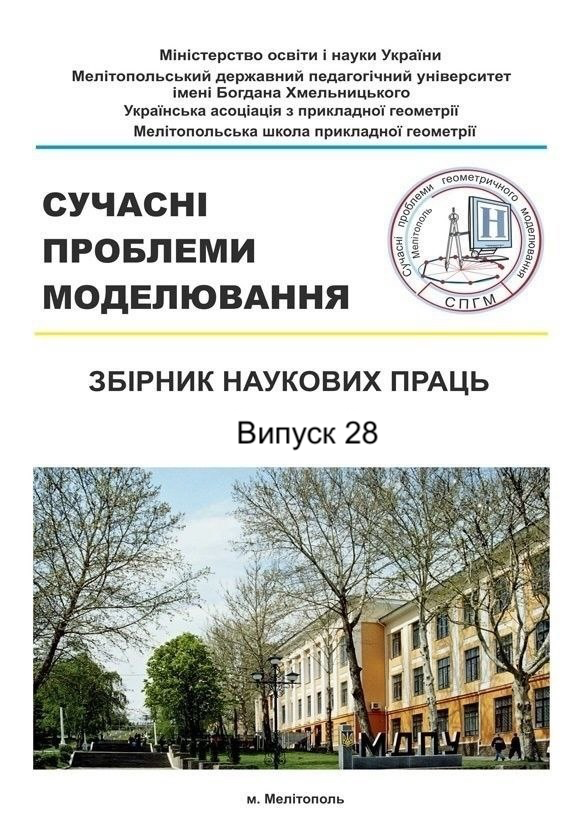THE INFLUENCE OF SUPERPOSITION COEFFICIENTS ON THE DISCRETE FORMATION OF ELEMENTARY FUNCTIONAL DEPENDENCIES
Abstract
The article presents a generalized approach to the discrete modeling of one-dimensional discrete geometric objects (DGOs) using templates, where the shape control of a discretely represented curve (DRC) being modeled is performed not only by the distribution function of the finite difference magnitude between adjacent nodes of the framework, but also by the distribution function of superposition coefficients.
Patterns of change in the values of superposition coefficients and the magnitude of the finite difference—which serves as a functional analog of load within the framework of the static-geometric modeling method—have been established during the modeling of one-dimensional point sets. This approach enables the effective solving of problems related to continuous discrete interpolation and extrapolation using numerical sequences for arbitrary one-dimensional functional dependencies defined by two selected nodal points.
One of the primary objectives of the study is to further develop the theoretical foundations for constructing discrete analogs of curvilinear objects based on the classical apparatus of finite differences, the static-geometric modeling method, and the geometric tools of superposition.
The research analyzes the process of forming discrete one-dimensional geometric objects using polynomial functional dependencies, with predefined values of superposition coefficients. It identifies patterns in the variation of superposition coefficients between adjacent nodal points of the polynomial function, as well as in the magnitude of the finite difference, illustrated through graphs of numerical sequences for a selected computational configuration.
The study establishes the dependencies of the finite difference magnitude on the ordinates of the modeled curve and the values of superposition coefficients between adjacent nodal points.
The obtained results make it possible to form one-dimensional geometric objects within a given computational scheme, based on known ordinates of two reference nodal points, superposition coefficients, and the corresponding finite difference.
Thus, the research proposes a universal approach to identifying the patterns of variation in superposition coefficients and finite differences within given computational schemes, enabling the modeling of point ordinates for arbitrary one-dimensional functional dependencies and point sets.
Keywords: discrete modeling, static-geometric method, geometric apparatus of superposition, finite difference magnitude, superposition coefficients.




